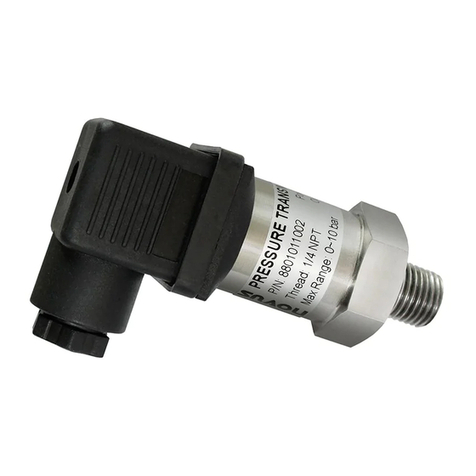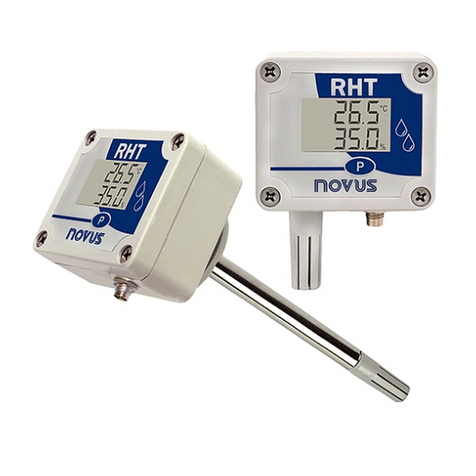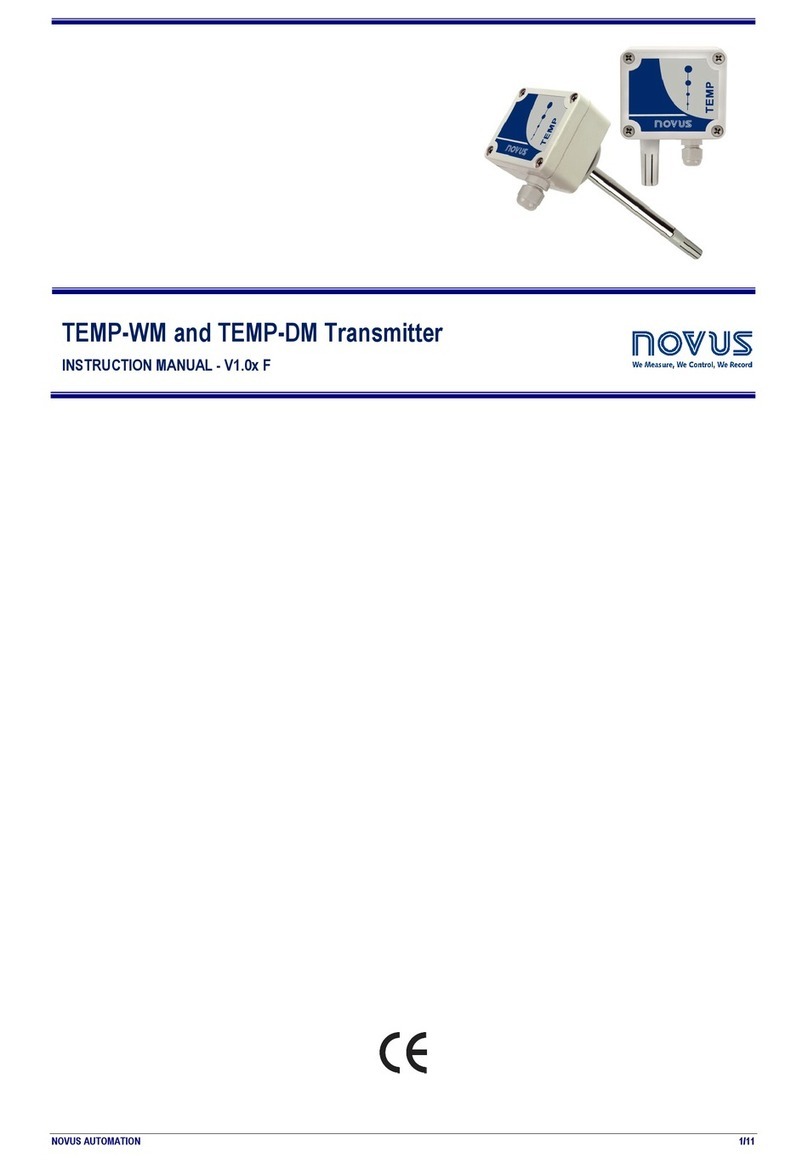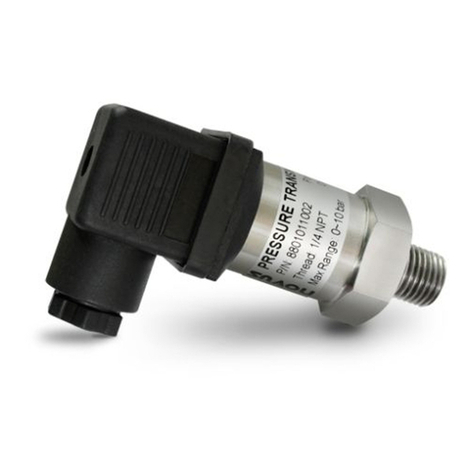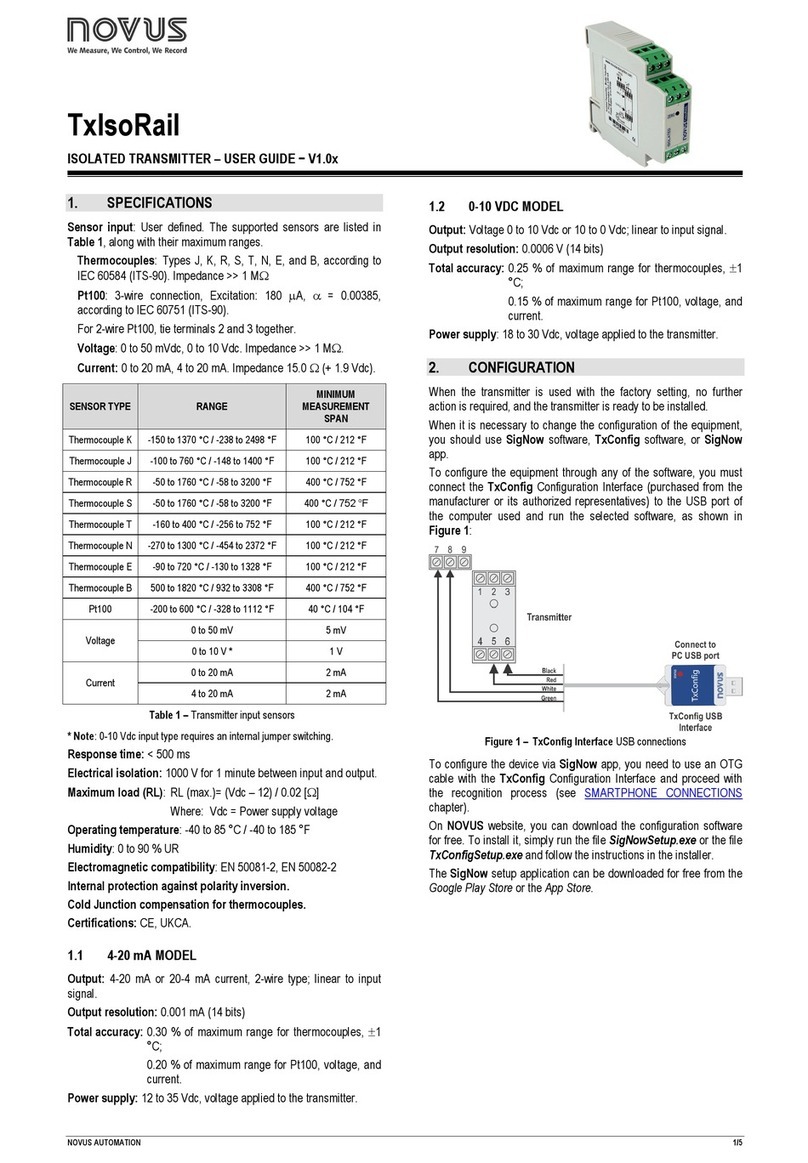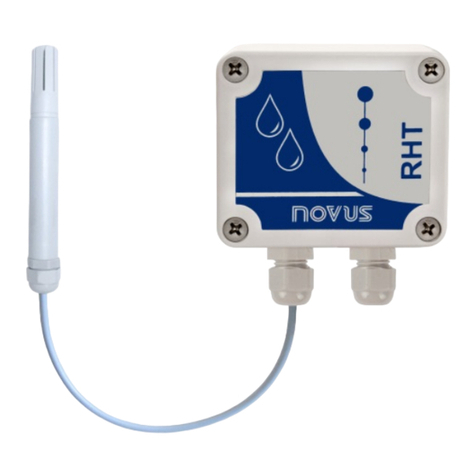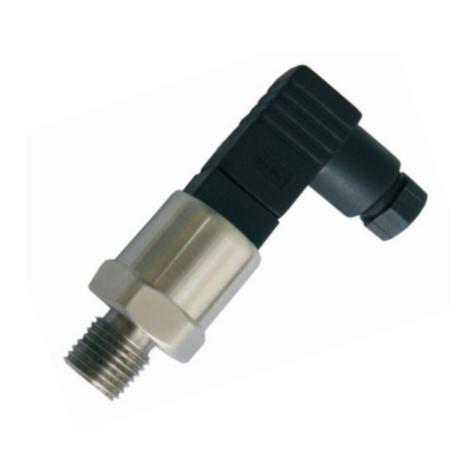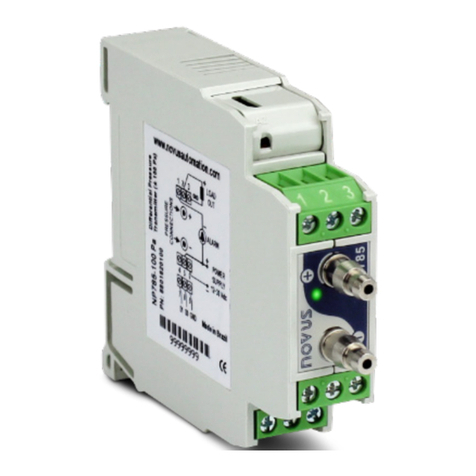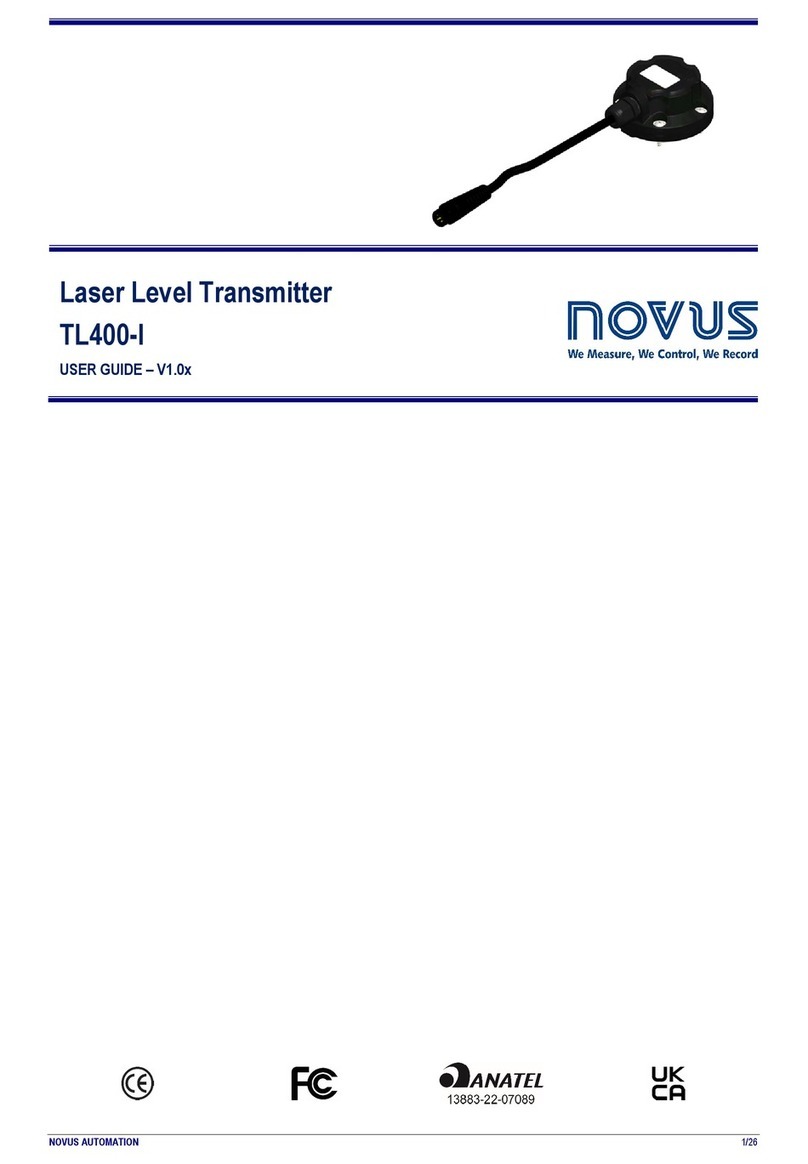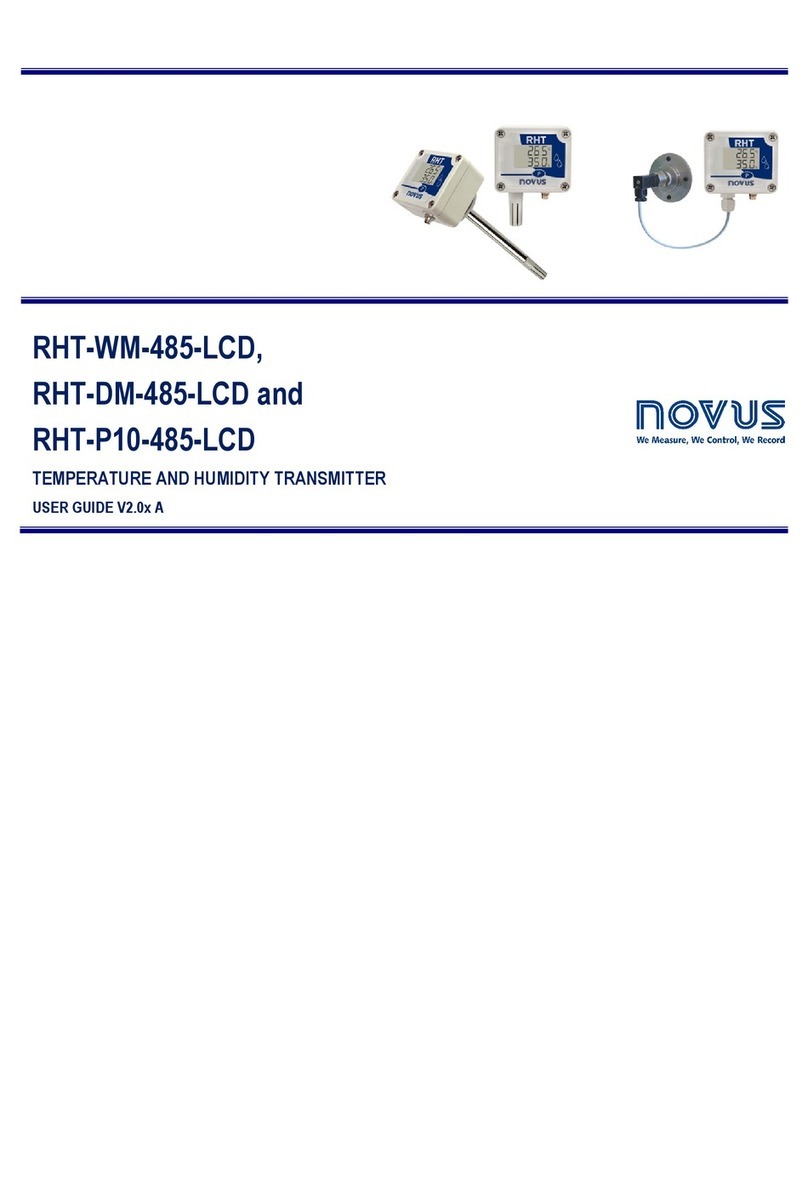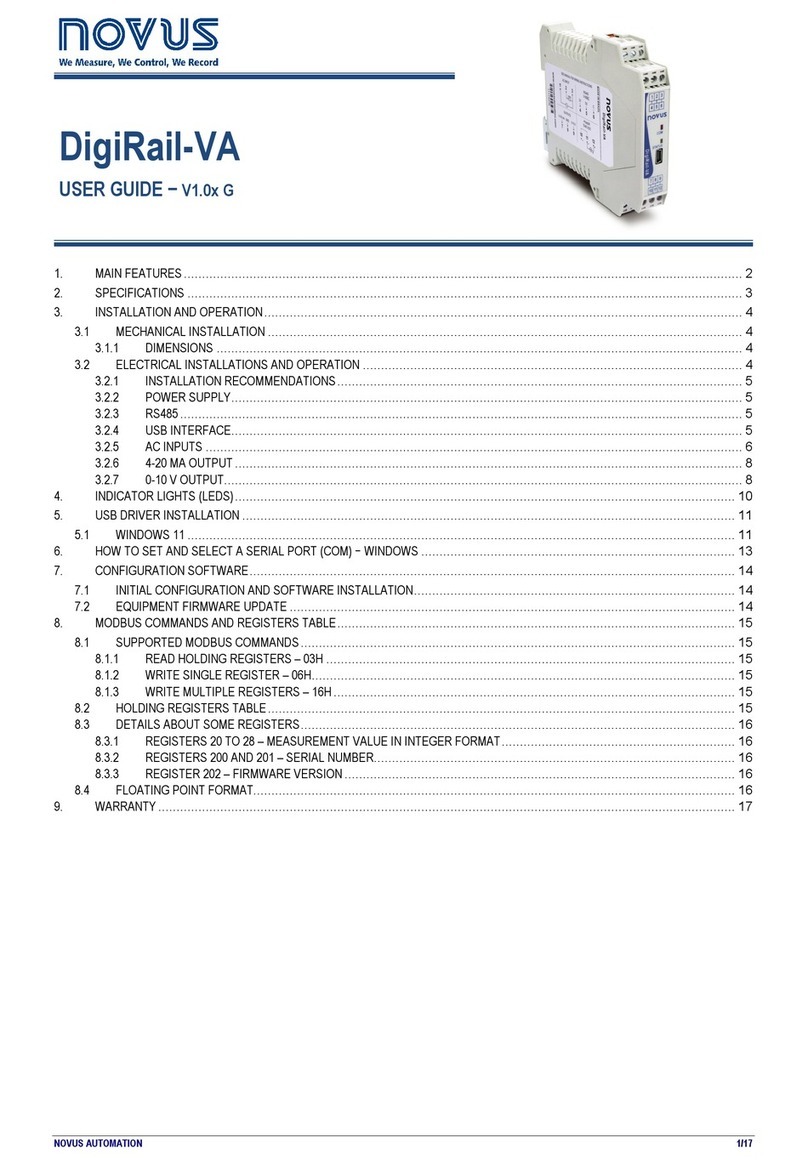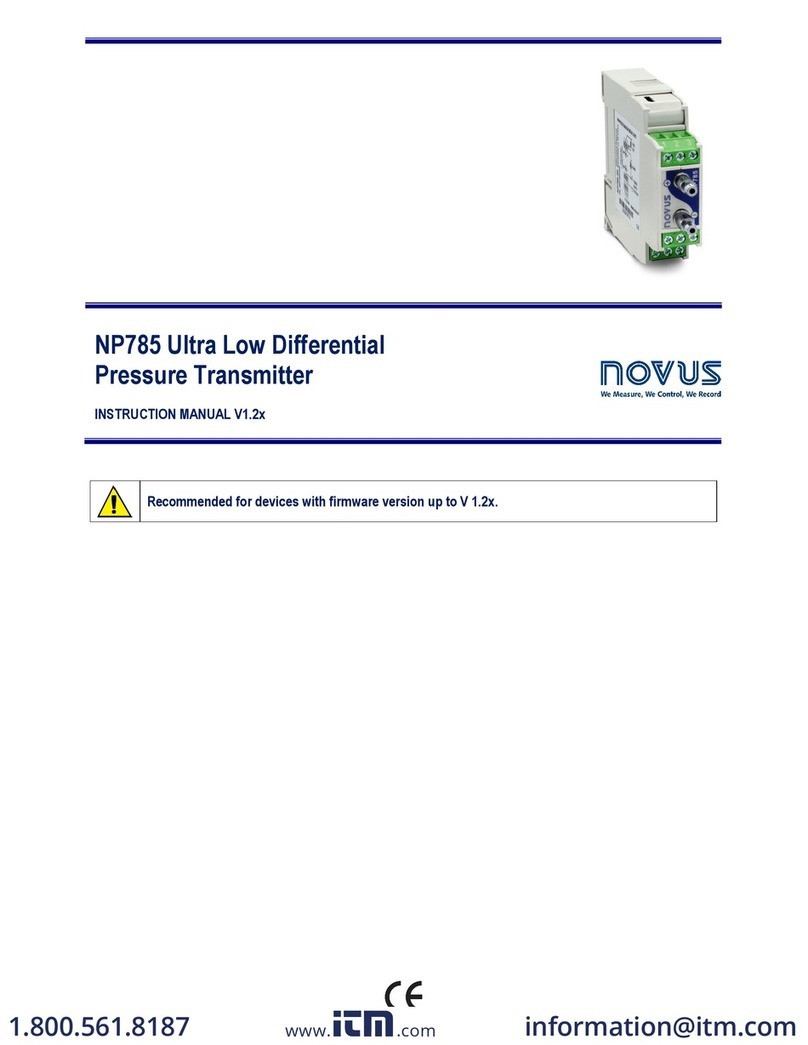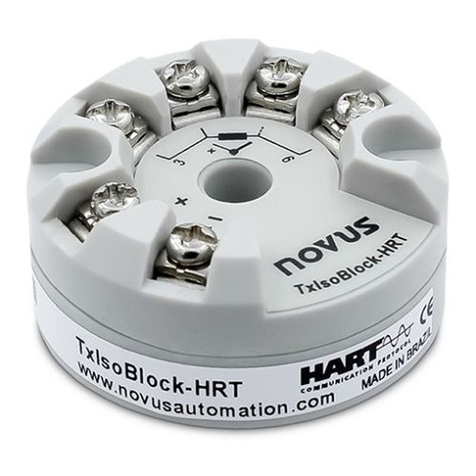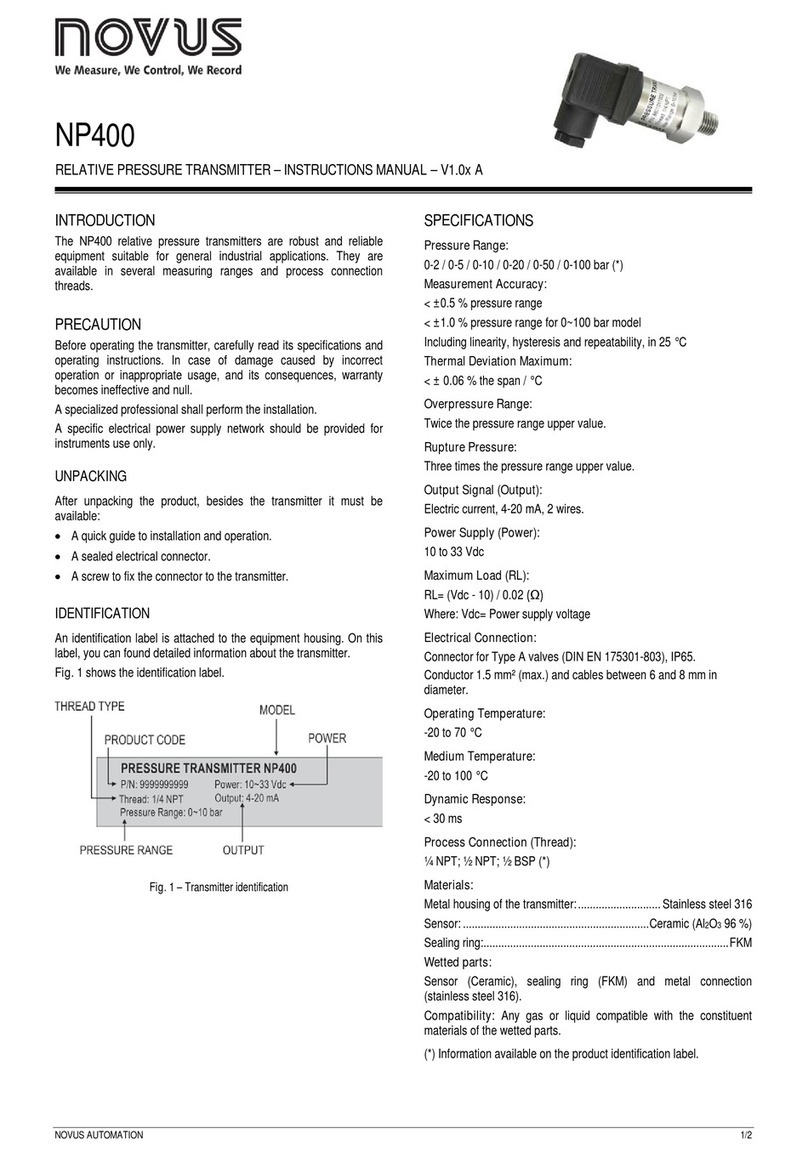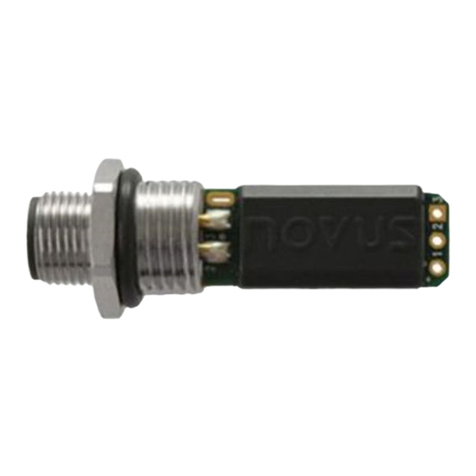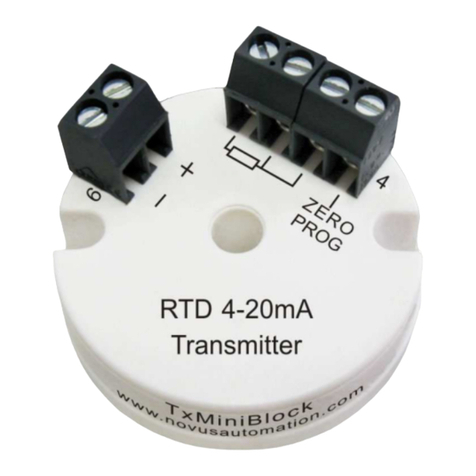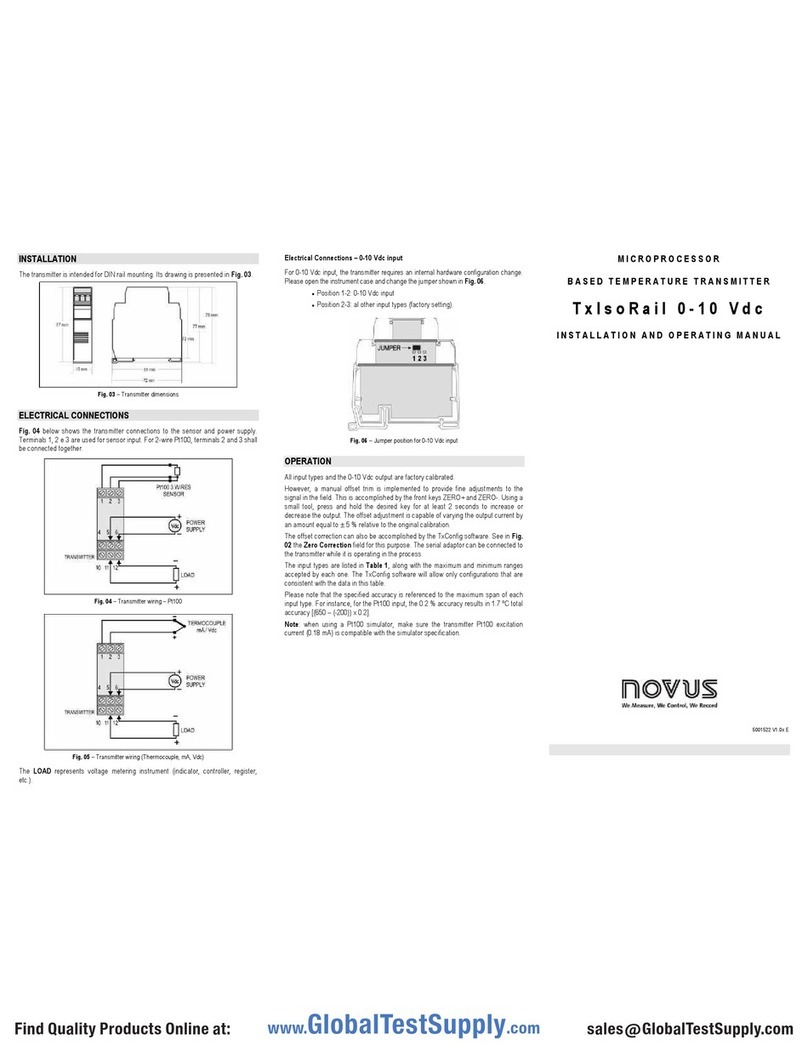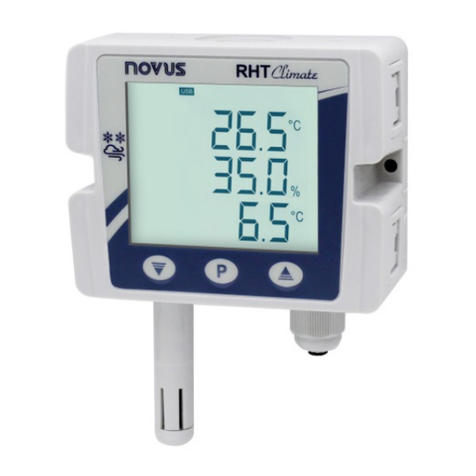TxIsoRail-HRT
NOVUS AUTOMATION 2/4
CONFIGURATION
When the transmitter is used with the factory setting, no further
action is required and the transmitter is ready to be installed.
Changes to the configuration are possible through the TxConfig II
software, provided free of charge.
The TxConfig II configuration software allows the device configuration.
A TxConfig-HRT interface is required to allow the communication
between a computer and the device. The Txconfig II configuration
software is continuously updated and new versions can be downloaded
at no charge from the manufacturer’s website. To install, execute the
TxConfigIISetup.exe file and follow the instructions.
The interface connects the transmitter to the computer, as shown in
Fig. 1:
Fig. 1 – TxConfig-HRT interface connection to the TxIsoRail-HRT
SOFTWARE CONFIGURATION:
Fig. 2– TxConfig II software main screen
The fields in the screen mean:
1. General Information: This field shows information that identifies
the transmitter. This information should be sent to the
manufacturer in an eventual request for technical assistance.
2. Sensor: Select the type of sensor to be used. See Table 1.
3. Unit: Select the temperature unit to °C (Celsius) or °F
(Fahrenheit).
4. Range: Sets de measurement range of the transmitter.
Lowest Limit: Equivalent temperature for a current of 4 mA.
Highest Limit: Equivalent temperature for a current of 20 mA.
Sensor Range
The values chosen cannot exceed the Range of Sensor shown
in this field. See Table 1 of this manual.
Minimum Range
Do not set a lower band (span) that the Minimum Range
indicated below in this same field. See Table 1 of this manual.
5. HART Information:
Tag: Field with a brief identification of the equipment (up to 8
characters);
Descriptor: Descriptor used by the master to register the data
(up to 16 characters);
Message: Message used by the master for registering (up to 32
characters);
6. Sensor Failure: It establishes the output behavior, when the
transmitter indicates a failure:
Minimum: Output current goes to < 3.6 mA (down-scale),
typically used for refrigeration.
Maximum: Output current goes to > 21.5 mA (up-scale), typically
used for heating.
7. Zero Offset: It corrects small deviations presented in the
transmitter output, for example, when the sensor is replaced.
8. Filter: Damping filter.
The damping filter changes the response time of the transmitter in
order to smooth the variations in the output. The value set in the
filter indicates the time interval at which the PV will reach 63 % of
its final value.
The factory setting is 1.0 s, and can be changed from 0 s to 32 s.
For example, in the case where the temperature should range
from 0 ° C to 100 ° C, if you considering the factory settings, after
1.0 s the temperature value shall be equal to 63 °C. A zero value
disables this function.
9. Enable Write protection: When activated, configuration is not
allowed.
10. Send Configuration: It applies the new setup. Once sent, the
setup will be immediately applied on the transmitter.
11. Read Configuration: Reads the current configuration in the
transmitter connected. The screen now presents the current setup
that may be changed by the user.
FACTORY SETTINGS:
•Sensor: Pt100 3-wire, range 0 to 100 °C;
•Sensor failure: Upscale (maximum);
•0 °C zero correction;
•Unit: °C;
•Filter: 1.0 s.
